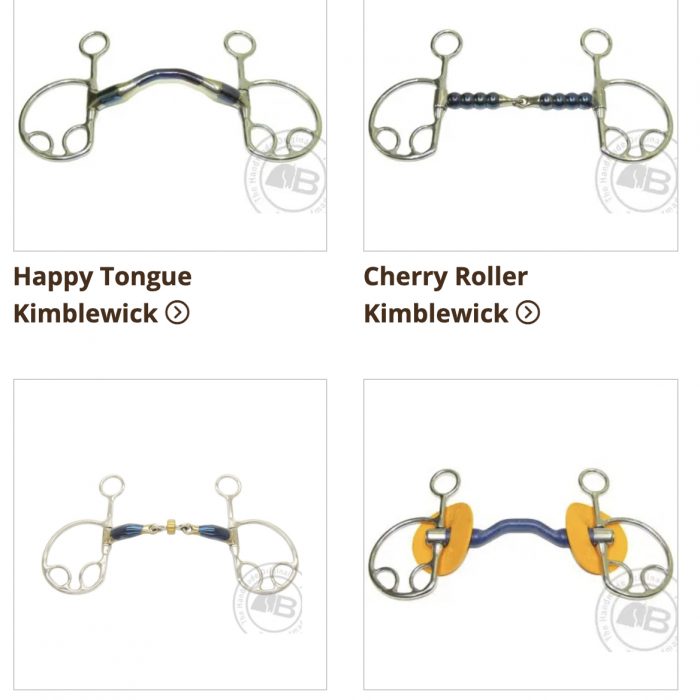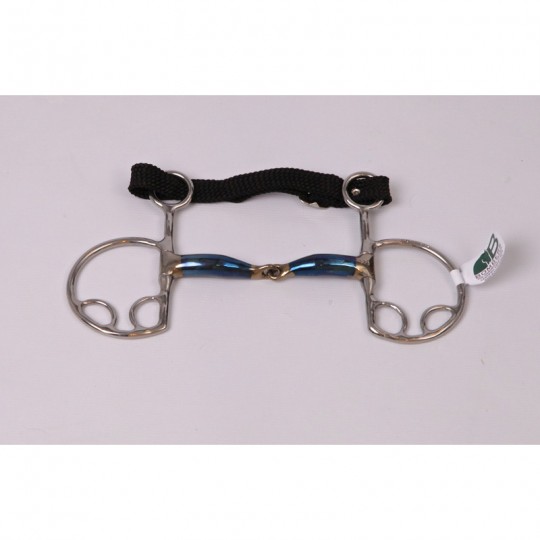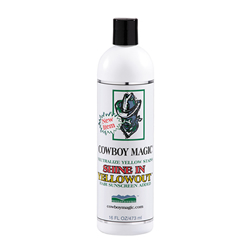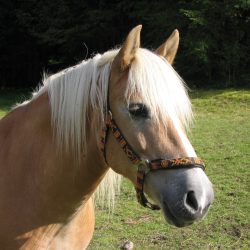Part of the Pelham family, the Kimblewick bit is used with one rein. It is said to have been developed from a Spanish bit by the world famous saddler Lieutenant Colonel F.E. Gibson, for Phil Oliver, who lived in the village of Kimblewick, in the Chilterns.
According to equestrian writer and editor Elwyn Hartley Edwards in his book ‘Saddlery’, other loriners copied the design and called the bit a ‘Kimberwick’ – which is why sometimes both versions of this name are used.
The Kimblewick really describes the cheek pieces of the bit – essentially it has bit shanks with short lever arms that create a small amount of leverage. The rider’s knowledge using this bit is key.
If the rider’s hands are held high and still, the leverage effect is reduced; while if the rider’s hands are low, the leverage increases, as the rein will slide about an inch on the Dee-shaped bit ring, and the bit will assume roughly a 45° angle in the horse or pony’s mouth.
This causes the mouthpiece to act in a downward and backward motion on the lower jaw, accompanied by a downward pressure on the poll, giving the bit a lowering or leverage action.
The Bombers range
 Bombers bits produces a range of Kimblewicks; these are very popular versions and all available from Equine Management:
Bombers bits produces a range of Kimblewicks; these are very popular versions and all available from Equine Management:
The Happy Tongue (far left) has a medium port, creating space for the tongue, relieving pressure and allowing the horse to relax;
The Cherry Roller (left) has rollers that swivel in the horses mouth, giving him something to play with and reducing the likelihood of the bit being held in the horse’s teeth;
The Buster Roller (far left) has a link in the middle that’s is shortened to 40mm, increasing bar and tongue pressure making the bit sharper than conventional link bits. It helps to discourage leaning on the bit;
The Bombers Blue (left) is ported to give tongue relief, and the unique material allows the bit to remain light, and encourage salivation.
We also stock the Snaffle Kimblewick (pictured below with a back strap).
This bit has a curved mouthpiece which distributes pressure more evenly over the tongue and bars.
With the offset centre link, it will reduce the nutcraker action and pressure points on the horse or pony’s tongue;
The Colin Miles, which has a 55mm centre piece, creates greater tongue pressure and reduces bar pressure.
 It’s important to note that while the Kimblewick is a very useful bit, and is successfully used by showjumpers, it can be quite a ‘strong’ bit in the wrong hands!
It’s important to note that while the Kimblewick is a very useful bit, and is successfully used by showjumpers, it can be quite a ‘strong’ bit in the wrong hands!
SHOP THE BOMBERS KIMBLEWICK RANGE HERE TODAY, AND ASK US ABOUT STOCKING THESE FANTASTIC, MULTI-DISCIPLINE BITS.
#bombersbits
#bombersbluebits
#teambombers
#bombersbitsbringbalance

 MADE IN THE UK
MADE IN THE UK



